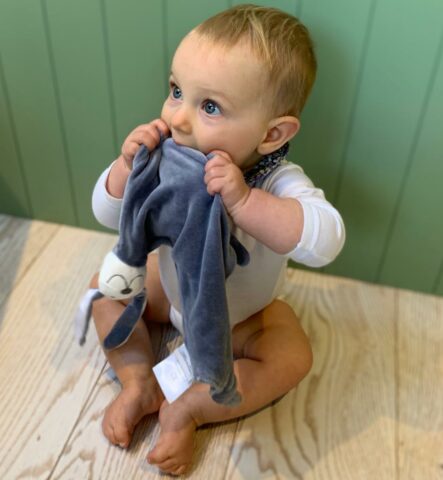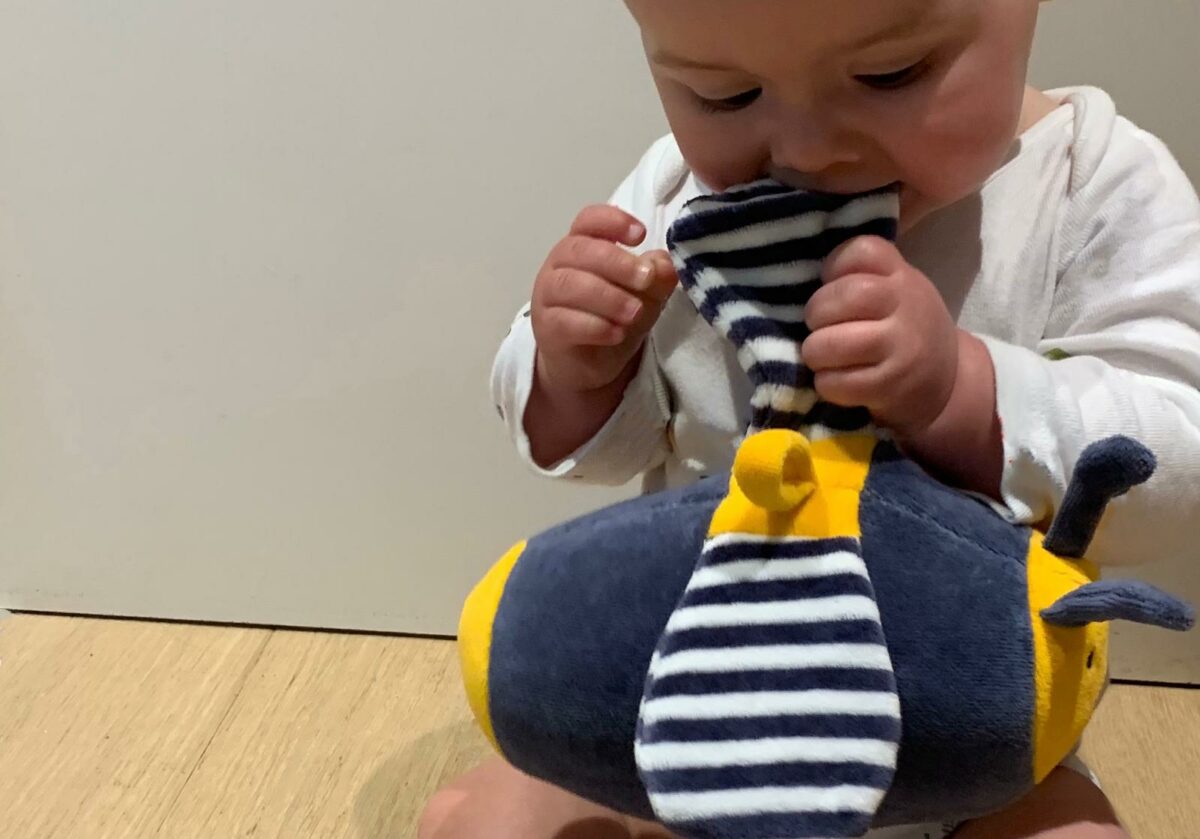Micro-plastics in the human body are a known health concern, but, due to lack of current research into the subject, the long term implications are not fully understood.
What we do know is that studies on animals and sea life who have ingested micro-plastics have experienced cell shutdown, reproductive issues, increased adult mortality, inflammation and metabolic issues. This is likely caused by the toxicity of the micro-plastics as they breakdown inside the body.

We take a look into what’s happening and how you can help reduce your baby’s consumption of micro-plastics
We’ve been banging the drum for years now that it’s so important to choose natural fabrics for your littles ones wherever possible. Particularly when it comes to baby comforters and sensory toys, which will be sucked on regularly by your baby. Choosing organic cotton soft toys is such a huge step to reducing the plastic consumption for babies.
The New York School of Medicine has recently discovered that babies have 10-20x more micro-plastics (by concentration) than adults. Particularly PET plastics, which are used in polyester textiles, water bottles and drinking bottles. To put this into context, 6 month old babies are on average 10x smaller than the average adult. Therefore, relative to body weight, these figures suggest that babies ingest 200x more micro-plastics than adults.
Kurunthachalam Kannan, lead researcher of the study and a professor in the paediatrics department, has said that “human exposure to micro-plastics is a heath concern”, and “We need to make efforts to reduce exposure in children. Children’s products should be made free of plastics.”
So, what are the leading causes of micro-plastics inside our babies?
The study highlights that infants mouthing behaviour (chewing on synthetic textiles) is one of the leading causes of increased exposure and ingestion. Especially when households have high amounts of polyester fabrics such as teddies, blanket, carpets and other synthetic soft furnishings, from which the micro-plastics will shed into the air, dust and onto items which are likely to end up in their mouths. Also chewing on plastic teething products, plastic toys, feeding bottles and kitchen utensils can increase their risks.

What can we do?
As babies have been shown specifically to have higher concentrations of PET plastic in their faeces (which comes from synthetic fabrics and drinking bottles), avoiding polyester textiles is one of the easiest and most effective ways to reduce your children’s exposure. Particularly soft toys and teething products which will end up being chewed. Huge amounts of micro-plastics are ingested every time they suck on polyester. Choose natural fibers for all clothing, and don’t let kids chew on anything around the house which is synthetic. It’s worth swapping out all polyester items that you have, because micro-plastics shed and collect in household air and dust, which babies are more exposed to than adults.
Switching to glass feeding bottles and plastic-free cutlery, crockery and kitchen utensils will also make a huge difference. And we also recommend filtering tap water to remove any impurities.
Our top swaps to reduce your baby’s exposure to micro-plastics:
Organic cotton sensory toys from Pure Earth Collection
Organic cotton comforters from Pure Earth Collection
Glass feeding bottles from Hevea Planet
Bamboo plates, cups and spoons from Eco Rascals
Bamboo baby blankets from Pure Earth Collection
Organic cotton snowsuits and jackets from Annaliv
